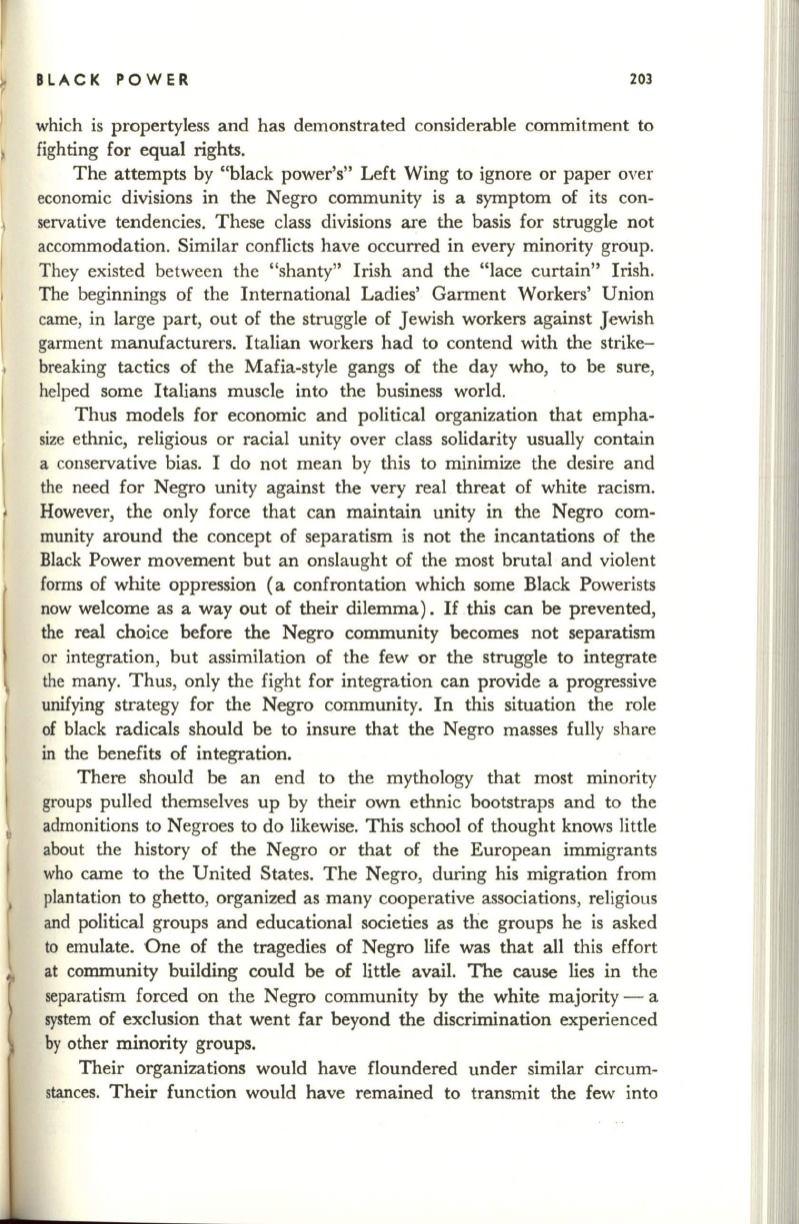
BLACK POWER
203
which is propertyless and has demonstrated considerable commitment to
fighting for equal rights.
The attempts by "black power's" Left Wing to ignore or paper over
economic divisions in the Negro community is a symptom of its con–
servative tendencies. These class divisions are the basis for struggle not
accommodation. Similar conflicts have occurred in every minority group.
They existed between the "shanty" Irish and the "lace curtain" Irish.
The beginnings of the International Ladies' Garment Workers' Union
came, in large part, out of the struggle of Jewish workers against Jewish
garment manufacturers. Italian workers had to contend with the strike–
breaking tactics of the Mafia-style gangs of the day who, to be sure,
helped some Italians muscle into the business world.
Thus models for economic and political organization that empha–
size ethnic, religious or racial unity over class solidarity usually contain
a conservative bias. I do not mean by this to minimize the desire and
the need for Negro unity against
the
very real threat of white racism.
However, the only force that can maintain unity in the Negro com–
munity around the concept of separatism is not the incantations of the
Black Power movement but an onslaught of the most brutal and violent
forms of white oppression (a confrontation which some Black Powerists
now welcome as a way out of their dilemma).
If .
this can be prevented,
the real choice before the Negro community becomes not separatism
or integration, but assimilation of the few or the struggle to integrate
the many. Thus, only the fight for integration can provide a progressive
unifying strategy for the Negro community. In this situation the role
of black radicals should be to insure that the Negro masses fully share
in the benefits of integration.
There should be an end to the mythology that most minority
groups pulled themselves up by their own ethnic bootstraps and to the
admonitions to Negroes to do likewise. This school of thought knows little
about the history of the Negro or that of the European immigrants
who came to the United States. The Negro, during his migration from
plantation to ghetto, organized as many cooperative associations, religious
and political groups and educational societies as the groups he is asked
to emulate. One of the tragedies of Negro life was that all this effort
at community building could be of little avail. The cause lies in the
separatism forced on the Negro community by the white majority - a
system of exclusion that went far beyond the discrimination experienced
by other minority groups.
Their organizations would have floundered under similar circum–
stances. Their function would have remained to transmit the few into


